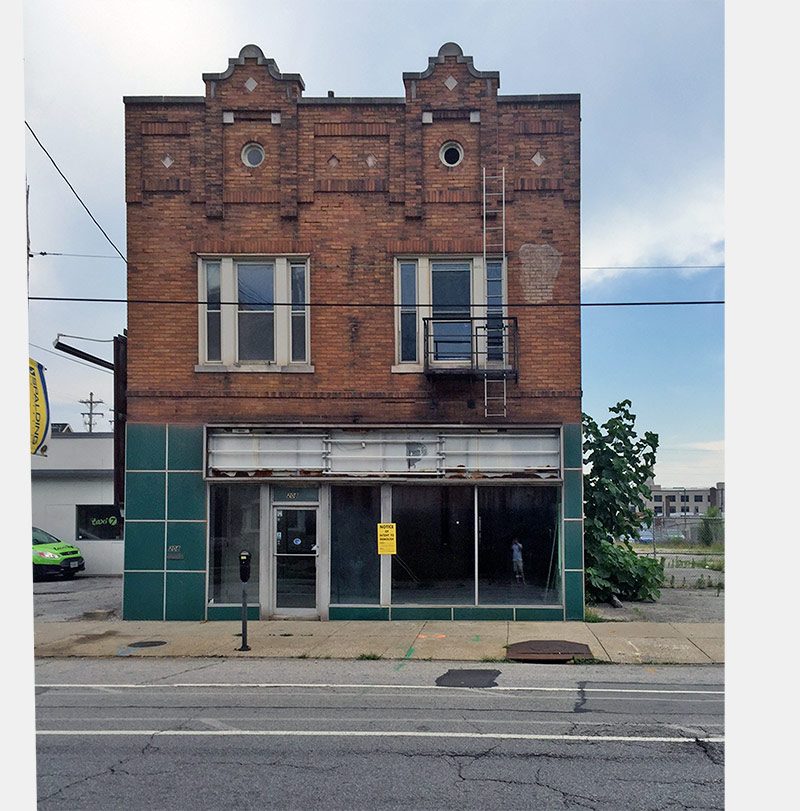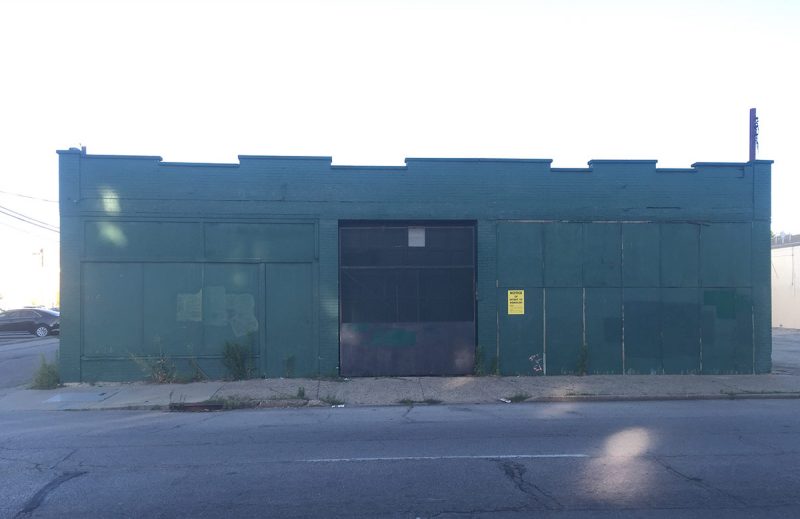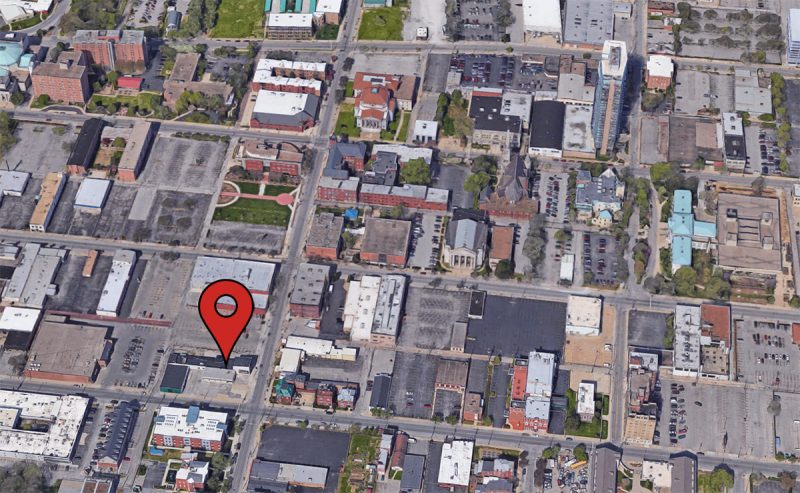(Note: Spalding has since announced that this demolition is on hold. Read more here.)
Today, Friday, August 5, Metro Louisville Codes & Regulations can issue a wrecking permit to Spalding University to raze two more historic properties in the SoBro neighborhood. The small private school plans to level the structures at 206–208 West Breckinridge Street (Case WR990118) and 914 South Second Street (Case WR990119) to build another surface-level parking lot in a neighborhood nationally famous for its overabundance of asphalt and vacant land.
Why is Spalding tearing down the building? According to Spalding President Tori Murden McClure, the university believes the structure is an eyesore that hinders its ability to attract students. Spalding spokesperson Rick Barney also told the Courier-Journal this week that the university wanted another parking lot closer to its new dormitory across the street so students didn’t have to walk as far to their cars.

President McClure was adamant that tuition dollars would not go toward preserving the structure. She told Broken Sidewalk that Spalding tries to keep tuition low by not spending tuition money on amenities like fancy dormitories or athletic fields. But to spend so much of the university’s money acquiring, demolishing, and then paving a site is somehow different. McClure declined to name how much Spalding is spending on the demolition, but the cost of asbestos abatement, wrecking, and then paving can easily run well into six figures. That money could have easily fixed up the facade of the Puritan building, prepped it for a tenant, and mothballed the rest of the building.
But what’s more disheartening is that Spalding is whitewashing the college experience for its students and acting without considering the interests of the neighborhood or larger community. There’s no denying Spalding is in an urban part of Louisville, and cities often have challenges with economic development and pushing investment in targeted areas. It’s a process that plays out over many years. Demolishing every old building that’s vacant or somehow looks frightening today is robbing future generations—including Spalding’s students—of the full potential of their city and neighborhood. These structures cannot be replaced and should not idly be thrown away for more convenient parking.
Spalding University has demolished three other historic structures in the surrounding blocks in the past seven years to make way for open space. The Old Presentation Academy Gym made way for a grassy lawn and a shotgun house and commercial building were leveled for Mother Catherine Spalding Square across the street. You can retrace Spalding’s three-decade history of neighborhood destruction here.


A month ago when yellow Intent to Demolish signs first went up at the site, we attempted to connect Spalding with interested developers and entrepreneurs who were interested in saving the Puritan Uniform Rental Building.
To Spalding’s credit, it agreed to meet with four interested people and show them the building. “I’d sell the building for what we paid for it,” Spalding President Tori Murden McClure told Broken Sidewalk on a tour of the structure. “If someone assured me it wasn’t going to look like this, and wasn’t going to stay like this.” Spalding paid $255,000 for the complex last November. McClure also said Spalding would consider working with a team to renovate the structure under Spalding ownership.


Local entrepreneur Dan Borsch was one of those who showed interest. He recently rebuilt The Tavern in Old Louisville after a major fire and also runs the nearby Burger Boy diner and Toonerville Deli. “It’s was nice that they met with me,” he said. “I tried to sell them on the potential of the site for the future. That if they invested the money they were going to spend on demolition they wouldn’t have an eyesore. In the future the market would catch up with it.I got the impression that they were leaning toward demolition.”
“The building is in not that bad of shape, Borsch said. “They’re totally missing out on a focal point for their campus. The building is so unique that if the building were remodelled it would be a draw for the whole community.”

Another potential investor who declined to be named due to professional considerations said the city’s 30-day hold on demolition for National Register of Historic Places–eligible buildings is too short to get a formal proposal put together. “The person that I met there made it very clear to me that anyone who wants to redevelop this site is up against a wall—20 days,” the commercial real estate broker who works in the Downtown area said. “I like the site. I like property, but I would literally have to spend over 60 hours of hard work [putting together a plan] just for a chance to get Spalding to consider.” Still, the investor was thankful Spalding took the time to meet.
And perhaps that’s a lesson we can learn from this latest demolition from Spalding. The university is the reason we have the 30-day wait time before demolishing National Register–eligible buildings in the first place following the contentious demolition of several Victorian mansions on Fourth Street for parking lots in the 1990s. Perhaps more than two decades later we can look at whether that 30-day window is working and reevaluate the process.
And the process is clearly not working. Thirty days isn’t realistically enough time to complete any meaningful work to save a structure. It’s only enough time to mount a hasty Landmarks petition drive or, more likely, appear to run around with your head cut off in a panic over yet another demolition—it sets up preservation efforts for failure which paints those efforts as obstructionist rather than potentially useful. There’s got to be a better way to handle these kinds of situations that don’t make the community feel powerless. We’ll explore some ideas from other cities in coming weeks.



eyesore?! Oh Jesus . The eyesore is the endless asphaltian wasteland that completes the mission to spread Carthage throughout SoWhat, more disconnect from an institution that should rightfully relocate to Buechel. But she said the same thing about Greenups, which they simply ignored from a maintenance standpoint.
Take the one story building down. Leave the little Puritan building and mothball it.
Get a clue.
As bizarre as the previous commenter often comes across (asphaltian?), she has actually stumbled into a good point. Spalding really should save the 2-story Puritan building. It is very attractive and marketable; it would not take much for it to be a real campus asset for the college.
Spalding is going for the “urban blight” look. For anything you want to say about U of L, at least they have some vision.
Sell it to Louisville’s number one real estate developer: UofL!
This is crazy! That first building is gorgeous. Spalding stop this!
That one address given in the article as 941 S 2nd must be in error. Should be 914 S 2nd.
You’re right, CTWhite. The city used that address in issuing the intent to demolish to 941 instead of 914 S. Second. What implications would that have for the permit being issued if the wrong address was used? I’ve updated the address above.
Very disappointing to see Spalding contributing to the urban heat island.
Please see this important update to the story: http://brokensidewalk.com/2016/puritan-demolition-on-hold/